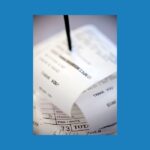Do you dread trying to organize your paperwork, particularly how to keep track of your receipts? Have you wondered how you will find all the receipts that you will need for income tax? If you answered “yes,” the following organizing steps may be of help.
It is essential for small business owners and entrepreneurs to have an organized system for their receipts for two reasons. First, if you don’t, the accuracy of your income tax return could be in trouble, and second, should you ever be audited, you want to be able to meet the requirements.
While there may be numerous ideas and systems for organizing one’s business receipts, the one I am about to share is relatively simple and follows a logical sequence.
Step 1: Keep all of your Receipts
It is critical to keep all of your business receipts. Develop a process for filing them in a way that suits you. For some, this may mean having a basket on their desk where receipts are deposited. For others, it could be an envelope where their receipts are deposited. Whatever means you select, be sure to make it convenient.
Step 2: Make a Note on each Receipt
On every receipt, be sure to make a short but specific note about the business purpose. For example, writing “Dinner Expenses” is quite vague, but writing “Dinner Meeting with Steve.” is specific. Some write the note immediately upon receiving the receipt, others that same day before depositing it into their chosen file. The sooner the note is made, the better. Should you have a personal and business expense on the same receipt, be sure to highlight the business expense and make a separate total.
Step 3: Digitize Your Receipts
Within the last number of years, there has been a shift away from filing paper records to digitizing paper documents and receipts. This is great for two reasons. First, it saves on space, and second, it is helpful because receipts have a tendency to fade with time.
There are two ways one can go paperless. The first is to purchase an inexpensive scanner. The second is to take a picture of your receipt with your phone. There are a number of apps available to assist you. Be sure to make a note on your receipt prior to scanning or taking a photo and that the scan or photo captures the whole receipt clearly with the date, business name, and amount of purchase.
Step 4: Categorize Your Receipts
Now that the data is collected, it is time to organize it. This will be sure to take the stress out of the process at tax time. There are numerous categories one can use. Here are a few:
- Advertising and Promotion
- Travel
- Meals and Entertainment
- Communication (Internet and Phone)
- Rent
- Utilities
- Supplies
- Insurance
Step 5: Avoid Using Cash
Using debit and/or credit cards should be the norm, as it is hard to keep track of and reconcile cash transactions. Have a business-only credit card and bank account, if possible.
Step 6: Avoid relying on Bank and Credit Card Statements
While important, these are insufficient for tax purposes.
Step 7: Be Consistent
This step is critical for success. Anything new takes time to master. It will take discipline to start, and you may have to tweak your process along the way, but before you know it, what was new will become natural.
Pro Ledger Online offers a cloud-based bookkeeping solution for small business professionals. click here for a 30-day free trial. – www.pro-ledger.com “Bookkeeping Made Simple”
The post How to Keep Your Receipts Organized in 7 Steps first appeared on Online Bookkeeping Software for Small Business | Easy & Inexpensive.

Recent Comments